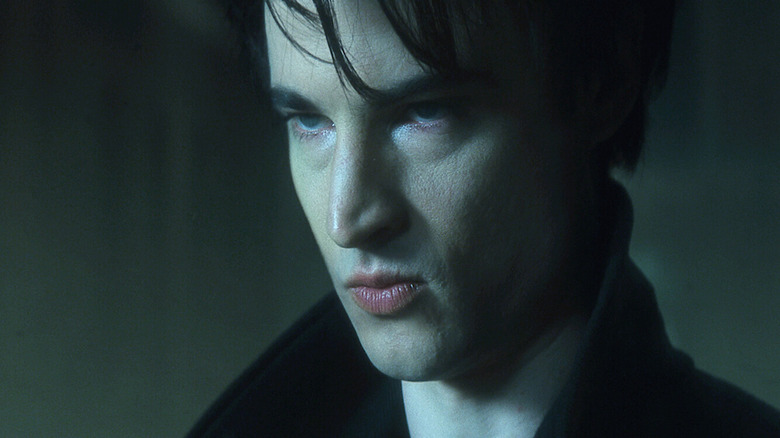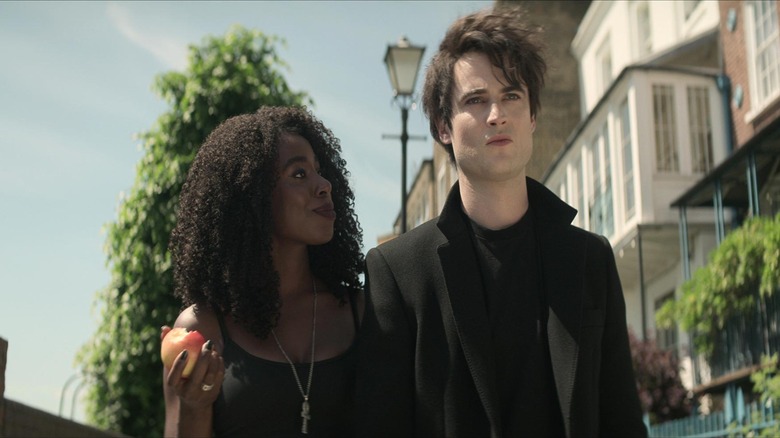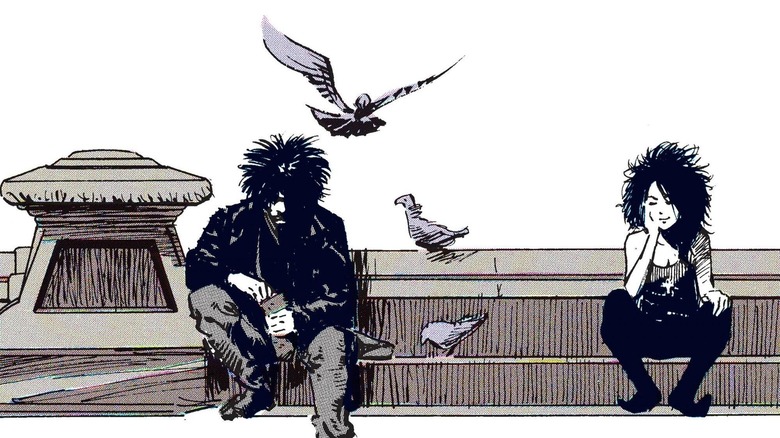One Key Aspect The Sandman TV Series Shares With The Comics
The 10-episode first season of "The Sandman" arrives this Friday, August 5, adapting the first two volumes of the beloved comic series of the same name. In a recent press day attended by fellow /Film writer Danielle Ryan, Kirby Howell-Baptiste spoke about the similarities in how the show and the comics are structured. The actor, who plays Death in the series, explained that this is a show where "there are no small players." Every character plays a key, memorable role, even if they aren't a constant presence.
That's because "The Sandman" isn't structured like a 10-hour movie, but one that embraces the more episodic structure of the comics.
"What I think is beautiful about all of our episodes," Howell-Baptiste said, "is whether you see a character for a single episode or for multiple, each of these episodes stand alone. They're almost like short films." In the comics, issues like "The Sound of Her Wings" and "Men of Good Fortune" contribute to the series' larger narrative, but they're also fun short stories that work just as well on their own. The former story, which introduces Death and takes us along her average day of reaping souls, is still emotional and thought-provoking whether you care about the larger character arcs or not. Knowing the larger context enhances the story, but it's not a necessity.
It's this structure that allows characters like Death, who show up surprisingly little throughout the full series, to make a massive impact. "There is a magnitude and a weight to every single character that is in 'The Sandman,'" Howell-Baptiste explained. "So to me, it is a case of absolute quality over quantity."
The comic's episodic structure
The binge format is not an inherently bad way to go about things, but that wouldn't make a lot of sense for this show. Like with most comics, the story of "The Sandman" unfolded one issue at a time. The main series is made up of 75 issues, published from January 1989 to March 1996. Most were 24 pages long, and they tended to be published around once a month. This structure meant that even when the series did do a longform story, every issue needed to feel relatively complete on its own.
The "Sandman" comics would also deliver standalone stories in-between each larger storyline. Even when there were two volumes in a row centered entirely around a longterm storyline ("Season of Mists" and "A Game of You"), readers were still given a few short stories as something of a palate cleanser. These stories would later be collected in a single sixth volume, "Fables and Reflections." When readers think back to their favorite individual issues of the series, they usually pick one of the standalone stories.
Nowadays, most readers of the series have access to all the issues at once. It leads to a different reading experience than that of a fan in the early '90s waiting for each individual issue, but not necessarily a worse one. Neil Gaiman has noted that the penultimate volume "The Kindly Ones," which was the longest storyline in the series, tends to be much better received by modern readers who get to read the whole thing in one sitting. It was criticized as "the most unfocused" and "overly drawn out" arc in the series at the time, and now it's widely considered one of the best.
Netflix's questionable binge model
With that in mind, Netflix's binge format seems like a mixed bag for the show. "The Kindly Ones" is a long way off, and the volumes season 1 is adapting have naturally led to the episodic style Howell-Baptiste talks about. With each episode working on its own reasonably well, wouldn't the show be better off released weekly? We know by this point that while some shows still manage to be a lasting hit despite having the whole season dropped at once, the binge format makes it harder for a show to stay in the public consciousness for more than just the week after it's dropped. Netflix releases hundreds of shows a year, and the majority of them seem to be quickly forgotten.
Then again, this isn't much different from the way modern readers get into the "Sandman" comics. Pretty much every "Sandman" fan for the past 25 years has not had to wait for every issue one at a time — they've been free to go through the series at whatever pace they feel comfortable with. Readers have been bingeing the comics for decades now and the series has still maintained its popularity. "The Sandman" was created for a monthly audience, but it may be malleable enough for the modern binge-watch.


